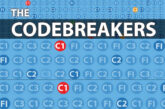
Need help with cracking those EICR codes? The technical team at NAPIT, with the help of the 18th Edition Codebreakers publication, answer your latest coding queries. Click on the photos for a closer look!
MATT SPENCER: I FOUND THIS LITTLE TREAT UNDER THE BOILER WHEN CARRYING OUT A RECENT EICR.
Although it is not uncommon to see accessories blocked in by all manner of obstacles, we all need to be aware that all terminals and equipment need to be accessible for inspection and testing, operation, and maintenance (Regulation 132.12).
An exception to this in some scenarios is where termination of a conductor is a maintenance-free type, adequately contained and enclosed (526.3).
Maintenance-free terminations will have an ‘MF’ symbol on them, denoting they can be concealed.
There are other instances where terminations can be concealed, but they wouldn’t generally be used in this scenario.
There is no way of knowing what came first here – the boiler or the electrical accessories. It could be that the boiler has been replaced and now covers the accessories, or there wasn’t proper communication between the electrician and the heating engineer.
In any case, we need to look at the issues we have and the infringements they may encroach on, such as:
● Limited or no access to isolate or operate switches (132.12)
● Possible burn or scald hazard associated with operating accessories, if pipes are hot (132.5.1,132.12)
● Possible access issues replacing fuses (132.12)
● No access to remove accessories to inspect, test, replace or maintain (132.12, 526.3)
Although more aimed at larger equipment types, Regulation 132.15.202 requires that every fixed electric motor be fitted with a means of isolation, which is readily accessible and easily operated, to prevent danger.
Understandably the fan isolator in the photo isn’t likely to be a high current using device, but it is a current using item nonetheless and incorporates a fixed electric motor.
In this case, it’s unlikely that the fan isolator switch can be operated at all, let alone be readily accessible.
The biggest dilemma for the inspector is evaluating the risk from, and perceived danger.
The installation and its use (and user(s)) need to be taken account of before any coding takes place.
In general, I wouldn’t see these as being high risk, as isolation for a fault can be taken care of by the incoming main switch, so no more than a C3. That said, a C3 can sit untouched for years.
In some circumstances, such as the rental sector, the safety of the tenant is paramount, and the landlord has a duty of care to ensure this.
So, I’m going to code these issues as if they’re for a Private Rental Sector (PRS) property EICR, bearing in mind that the installation is likely to be used by an ordinary person without any electrical knowledge or understanding.
Find out how you can purchase a copy of the NAPIT Codebreakers publication by clicking here








